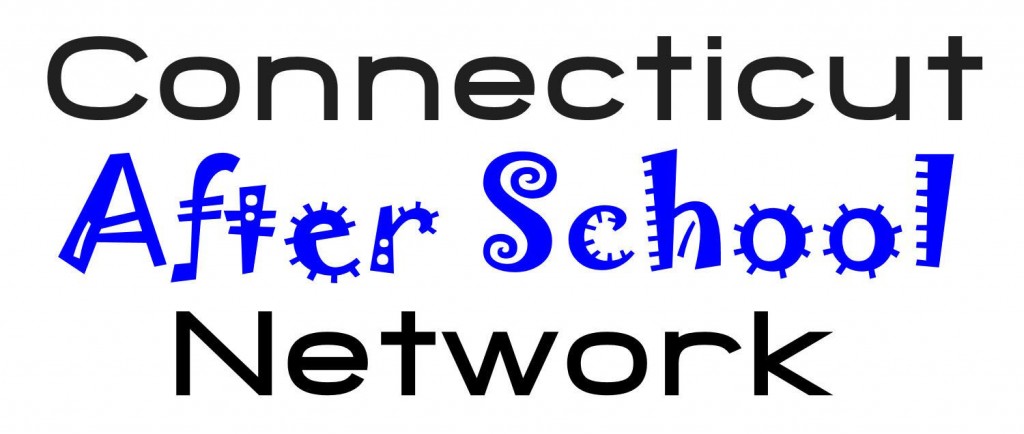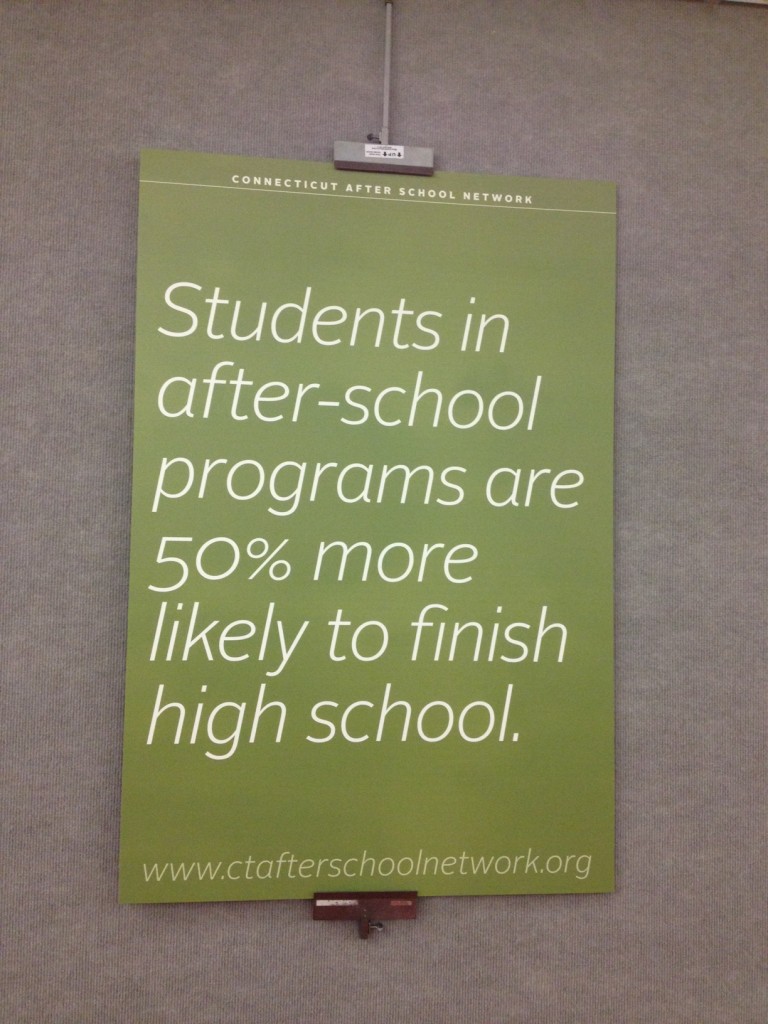After-School Network Highlights Accomplishments, Fights for Budget
/The lengthy corridor between the State Capitol building and the Legislative Office Building routinely hosts informational poster displays on its walls, in two-week cycles, from a broad range of agencies, organizations and associations, highlighting their work and the impact it has on the state. Reservations for the space are routinely made weeks in advance.
One of the current displays, coordinated by the Connecticut After School Network, comes at a time when they – like many other nonprofit organizations and state agencies – are facing a potential budget cut from the state, at the urging of Gov. Malloy. Ultimately it is the state legislature that will determine the parameters of the budget, a debate underway throughout the Capitol complex amongst legislators who pass by the posters each day, with messages and statistics that are hard to miss. Among them:
- After-school programs cut the risk of juvenile crime by as much as 75%
- In Connecticut, 19% of children under the age of 18 experience food hardship. Many rely on the meals they get at school and in after-school programs as a primary source.
- $1.7 to $2.3 million is saved by putting one high-risk youth on the right path.
- 73% of working parents miss less work when their children attend an after-school program.
- Students in after-school programs are 50% more likely to finish high school
- One in five Connecticut children (21%) regularly spends time after school unsupervised. This tr
 anslates to more than 80,000 Connecticut children
anslates to more than 80,000 Connecticut children - Children and youth involved in after-school programs have fewer absences from school.
March 7 was “After School Day at the Capitol.” The organization released a major report "Supporting Student Success in Connecticut: A BluePrint for Expanded Learning Opportunities". The report calls on the state to make “7 smart, strategic investments,” reflecting that “after-school not be an after thought.” The recommendations include addressing the issues of summer learning loss, incorporating expanded learning opportunities into the state’s education reform strategies, increasing alignment between systems and funding sources, rethinking the relationship between time and learning, and strengthening quality and accountability.
Their website currently features a petition urging restoration by legislators of the $4.5 million proposed cut and is promoting the organization’s 7th Annual Literacy Essentials Conference, to be held on Saturday, April 6 in conjunction with Central Connecticut State University.
The organization’s web site also points out that “every dollar invested in after school programs will save taxpayers approximately $3, not including the savings from reduced crime.”
The Connecticut After School Network is a nonprofit 501(c)(3) organization originally founded in 1989 and incorporated in 1990 under the name Connecticut School Age Care Alliance (CSACA). In 1990, CSACA became affiliated with the National School Age Care Alliance (now the National After-School Association).
Following similar action by the national organization, CSACA changed its name and broadened its mission in 2006, becoming the Connecticut After School Network. It is a partnership of individuals and organizations working to ensure that every Connecticut child and youth will have the opportunity to participate in high quality, affordable after school programs.
The State Department of Education is a significant partner and major funder of the Network, providing leadership, support and technical assistance. SDE also oversees the CT After-School Advisory Council which provides advice and direction to the Network.





























